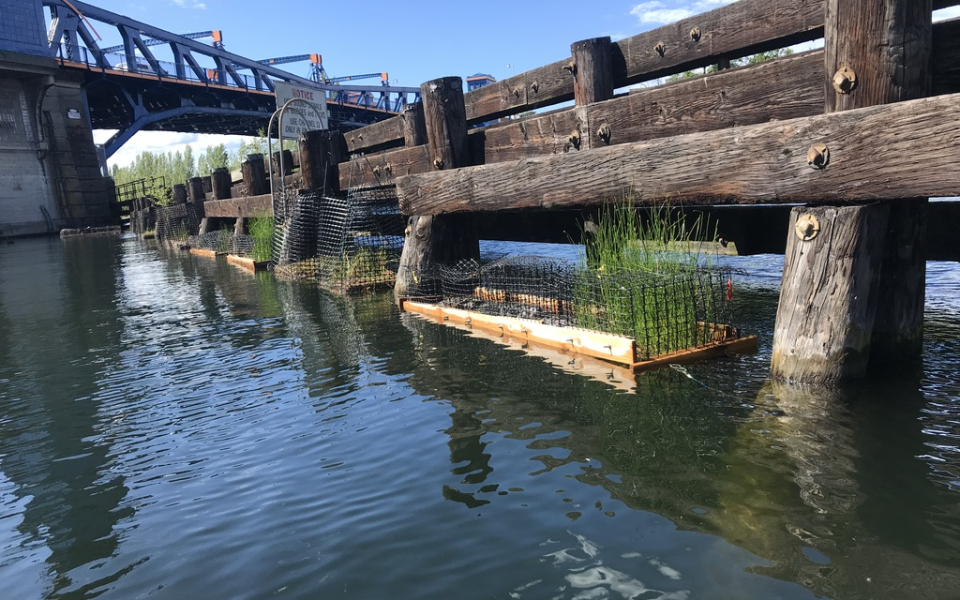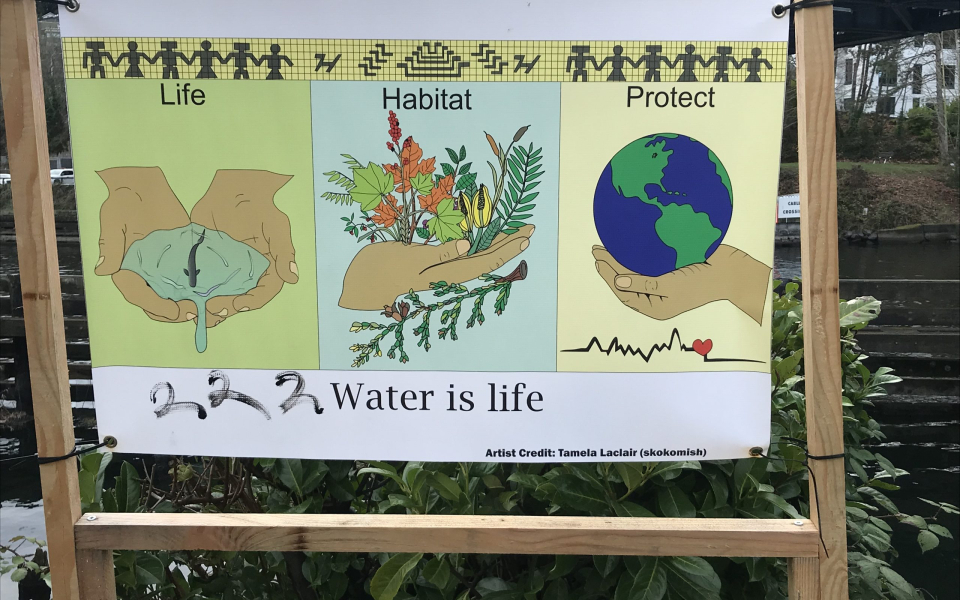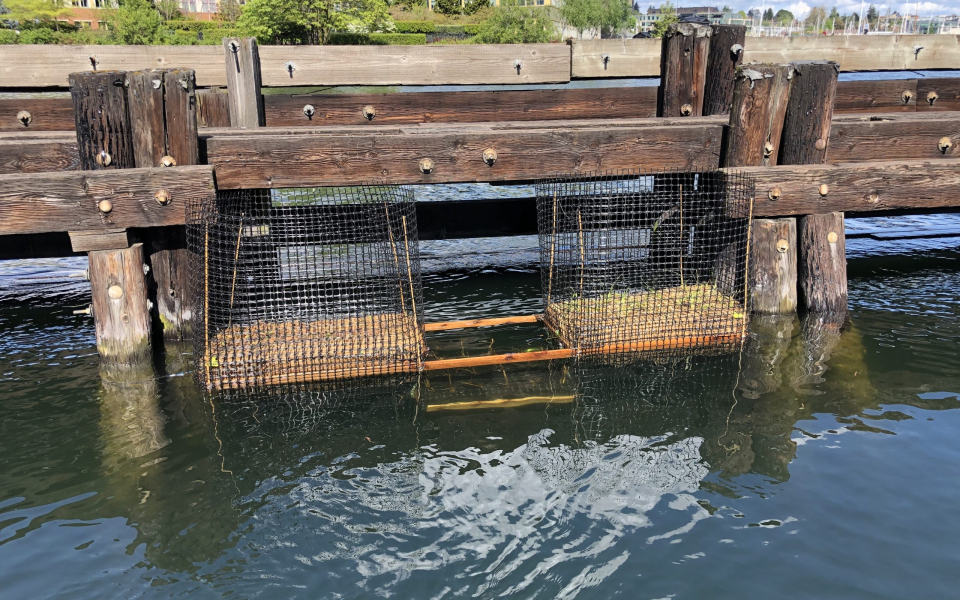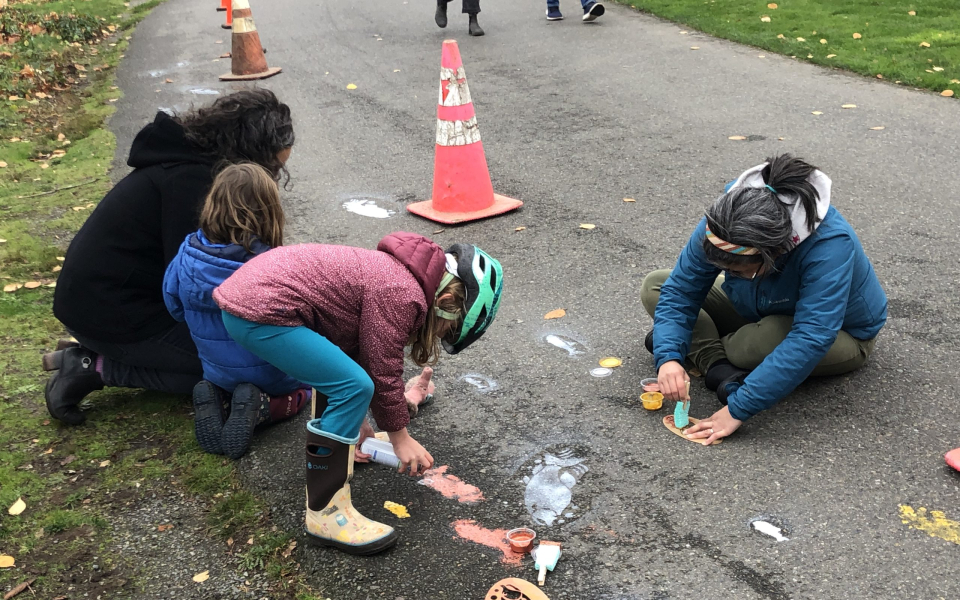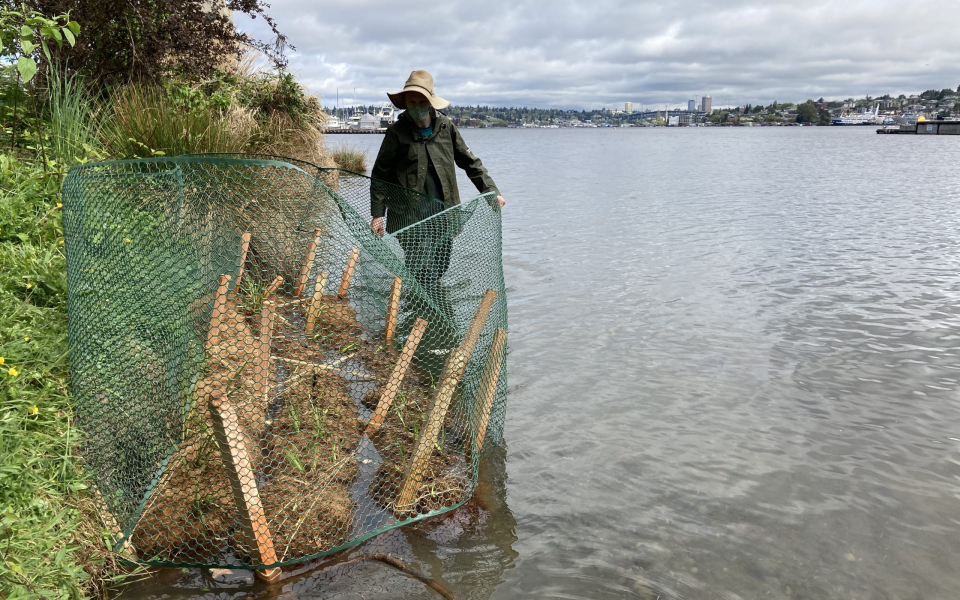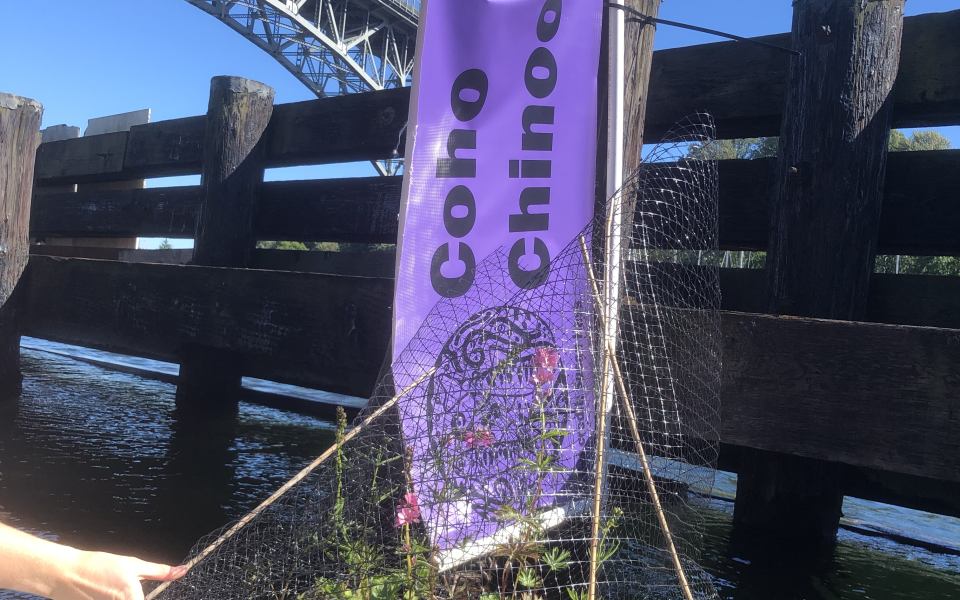Background
Many Puget Sound cities are located along the shores at the mouths of watersheds that meet the Sound’s estuarine waters, creating a gauntlet of urbanized waterfronts with polluted and warming waters through which migrating salmon must swim to survive. Armored shorelines have replaced the historic wetland habitats that once lined the watersheds and estuaries, removing the food source, refuge, and ecological estuarine processes that five species of salmon — a primary food source for the Endangered Puget Sound Orca — and other native species require to thrive. The purpose of the Sweetgrass Living Shorelines Project is to implement and test innovative approaches to retrofitting urbanized waterfronts with living, ecologically productive shorelines that restore habitat function while accommodating essential urban uses and ensuring coastal resiliency. Prototype goals are to improve aquatic water quality, and to enhance habitat by reducing water temperatures and nutrification, creating refuge for juvenile salmon, and providing food for salmon smolts in the form of both aquatic and terrestrial invertebrates. The project aims to develop and document prototypes that can be replicated on civic, industrial and recreational waterfronts throughout the Puget Sound region.
Project Goals
The purpose of the Sweetgrass Living Shoreline Restoration Project is to test new ways to retrofit existing armored urban shorelines with living shorelines that can improve water quality, increase salmon habitat, and restore cultural keystone species such as Ka’qsxW or sweetgrass (common three-square bulrush) in the Lake Washington Basin, Ship Canal and Central Puget Sound. This project will build on the planning and design groundwork established by the Sweetgrass Urban Shorelines Working Group, which is bringing together planners, scientists, regulators, designers, and community stakeholders to reimagine living shorelines that are connected to local communities.
Check out the links below to see our progress and learn more about the project –
